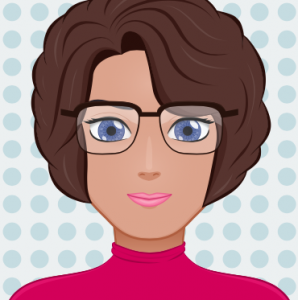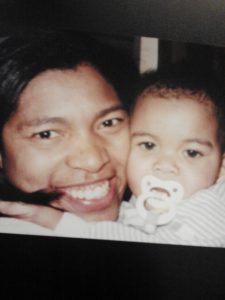Virtual reality has the potential to changeover educational systems in all levels. As we know, our educational systems aren’t the best in the world, but could be if there were a few changes made. Teachers often struggle with being able to actually teach and keep students attention. However, in Ready Player One by Ernest Cline, everyone lives in a world of virtual reality. Most importantly, every child is able to attend “online” school by creating an avatar where no one knows who you are or what you truly look like. Many students face issues at school, aren’t able to even afford attending school and in some sort, just rather not go. If our educational system adapted to using virtual reality, students would actively engage during class, have an increased attention span, and develop a better understanding of their class.
In Ready Player One by Ernest Cline, Wade attends in the virtual world of OASIS. He logs in to attend classes taught by a virtual teacher, just an avatar of a real teacher. In the virtual world, Wade travels all over the world, back and fourth throughout time in all his classes. Cline states, “…we traveled through a human heart…watched it pumping inside” (Cline 48).Wade also has traveled to the Louvre, all of Jupiter’s moons, Egypt in AD 1922, many places (Cline 48). Allowing Wade to travel to all these places over the world, gave him a better understanding and insight of the importance. Teachers often feel like they have to “spend most their time acting as babysitters and disciplinarians” (Cline 47). In virtual reality, the OASIS ensured that students remained quiet and always in their sits. Although Cline didn’t say this directly, it’s obvious to say that virtual reality provides one with a better understanding. When it comes to the topic of virtual reality and education, most of us don’t think too much about it. However, virtual reality has the potential to change our educational systems on all levels. Our educational systems adapting to virtual reality would deflate numerous issues in the classroom, such as lack of attention, negative grades, etc., making school more enjoyable. Furthermore, virtual reality can can turn well-known activities being used negatively in the classroom, such as multitasking into a good thing.
In the discussions of Olivia Goldhill, one controversial issue has been whether multitasking affects you negatively or positively. Goldhill acknowledges that, “When we attempt to multitask, we don’t actually do more than one activity at once, but quickly switch between them…this switching is exhausting” (Goldhill, paragraph 2). In the classroom, relating to school in general, most students find themselves multitasking everyday and actually don’t realize that we are just switching between multiple activities. In the classroom, often a student may be reading and taking notes, or listening to the instructor, taking notes, and sending one or two text messages while doing so, they seem to “develop a short attention span an begin to self-interrupt” (Goldhill, paragraph 10). Multitasking isn’t used in a positive manner in the classroom. Although some readers may object that multitasking isn’t used efficiently, I would answer that if our educational system adapts to virtual reality, multitasking would be used to its full potential. For example, if students would be able to travel to see the Louvre, like Wade did, it would benefit both the student and the teacher. More so, because the student would be able to actively participate in multitasking in a positive way and the teacher would have their students attention at all times and would be able to receive more feedback in class. After all, virtual reality can only move our educational systems in a upward formation.
In conclusion, our educational systems adapting to virtual reality can truly make a great impact in both the students and teachers lives’. Adapting to virtual reality would be a great way to reform our educational systems. Virtual reality comes with a lot of positive attribute and would minimize problems commonly in all schools.


 can read. Based off his word choice here, “…still await the long-term neurological and psychological experiments that will provide a definitive picture of how Internet use affects cognition…” (Carr, “Is Google Making Us Stupid?”), it’s clear to say that’s true. However, it’s important to know why he wrote this article.
can read. Based off his word choice here, “…still await the long-term neurological and psychological experiments that will provide a definitive picture of how Internet use affects cognition…” (Carr, “Is Google Making Us Stupid?”), it’s clear to say that’s true. However, it’s important to know why he wrote this article. Image of higher level word choice.
Image of higher level word choice. Like other internet articles, this article contains, ads, pictures relating to the topic of the article, and highlighted words. The Atlantic magazine “…publish factual information that utilizes loaded words (wording that attempts to influence an audience by using appeal to emotion…” (“Left-Centered Bias”). Unlike other sources, this article really doesn’t display any bright colors, besides the pictures under the paragraphs. However, the picture where you first start reading the article is brightly colored and looks like it could be hand drawn or painted. The image displays a man, “internet patrol” giving another man a ticket. This picture gives an comical aspect to Carr’s article because it shows us how the internet controls our life.
Like other internet articles, this article contains, ads, pictures relating to the topic of the article, and highlighted words. The Atlantic magazine “…publish factual information that utilizes loaded words (wording that attempts to influence an audience by using appeal to emotion…” (“Left-Centered Bias”). Unlike other sources, this article really doesn’t display any bright colors, besides the pictures under the paragraphs. However, the picture where you first start reading the article is brightly colored and looks like it could be hand drawn or painted. The image displays a man, “internet patrol” giving another man a ticket. This picture gives an comical aspect to Carr’s article because it shows us how the internet controls our life.